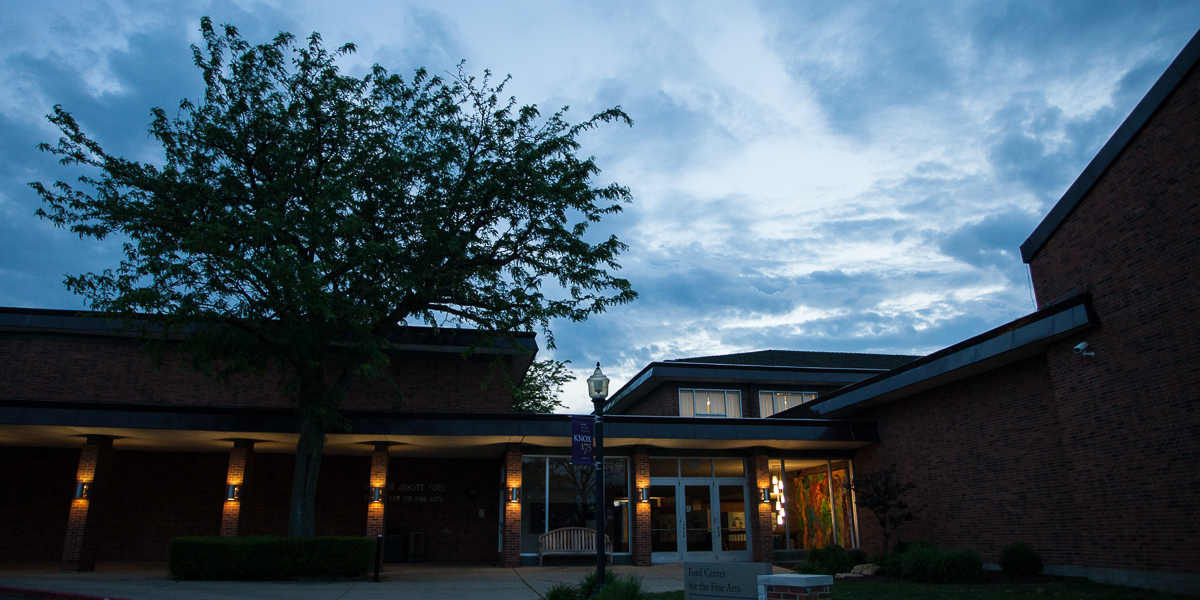

Venture Boldly

Adriana Colindres
Features Editor
2 East South Street
Galesburg, IL 61401

Intrigued by a complicated physics riddle, Knox College student Runtian Bai spent 15 hours formulating an answer that earned him the 2010 Porter Prize.
The prize is awarded annually to the Knox student who devises the best solution to a specially written physics problem. Bai, who just completed his sophomore year, was recognized for his accomplishment in May at the 2010 Honors Banquet.
An economics major, Bai felt confident that his Knox College classes in physics and math equipped him with the knowledge he needed to tackle the intricate physics puzzle, which dealt with a theoretical particle sliding off a theoretical log.
 Originally from Qingdao, China, Bai has lived in the United States for five years. He graduated from Urbana High School while his mother, Qingyan Tian, pursued a doctorate at the University of Illinois.
Originally from Qingdao, China, Bai has lived in the United States for five years. He graduated from Urbana High School while his mother, Qingyan Tian, pursued a doctorate at the University of Illinois.
At Knox, he is a member of the men's tennis team and president of the Badminton Club. Bai, who is considering a career in engineering, began an internship this summer with the City of Galesburg's economic development department, under the supervision of Director Cesar Suarez. He plans to continue the internship after Knox classes resume in the fall.
This year marked Bai's second attempt at solving a Porter Prize Problem. As a first-year student in 2009, he wasn't able to come up with an answer.
But as soon as he read the newest version of the puzzle, he said to himself: "I can do it. I know I can do it. I just need time."
The official description of the two-part problem includes technical terms such as "kinetic friction coefficient" and a mathematical formula containing variables X and Y.
Boiled down, though, it centers on a butterfly's effect on a particle sitting on top of a smooth log.
In the first scenario, the passing butterfly causes the particle to move slightly and begin sliding along the log. The question is: At what height does the particle fall off the log?
In the second scenario, the butterfly slightly taps the particle, providing it with some velocity. Two questions are posed: What is the minimum velocity that will push the particle off the log? At what height does the particle fall off the log?
As Bai considered the problem and wrote a computer program to solve it, he drew on lessons he picked up in Physics 110, a Knox course on mechanics.
"In that course, you learn the method to solve this problem," Bai said. "It's just an easy physics concept."
Working through the mathematics, however, proved difficult.
"My final answer wasn't completely correct, but my way of solving it is the way to do it," Bai said.
Knox Physics Professor Thomas Moses, who wrote the problem, agreed, saying: "His number was off, but his method was right on. He had all the right ingredients. I felt like that was a valid win."
Bai said he plans to tackle the 2011 Porter Prize Problem, too, when it is released next year. The Porter Prize was established by Knox alumnus Carroll D. Porter '32.
Moses, who has authored several of the problems, said that crafting a physics puzzler with precisely the right degree of difficulty is no simple task.
"It's quite tricky to design these problems," he said. "You want somebody to be able to solve them. On the other hand, you don't want to have everybody be able to solve them."
"It often takes me several tries to get a question that works," Moses added. "That's quite a challenge, but it's a lot of fun."
Founded in 1837, Knox is a national liberal arts college in Galesburg, Illinois, with students from 45 states and 48 countries. Knox's "Old Main" is a National Historic Landmark and the only building remaining from the 1858 Lincoln-Douglas debates.
Published on June 23, 2010